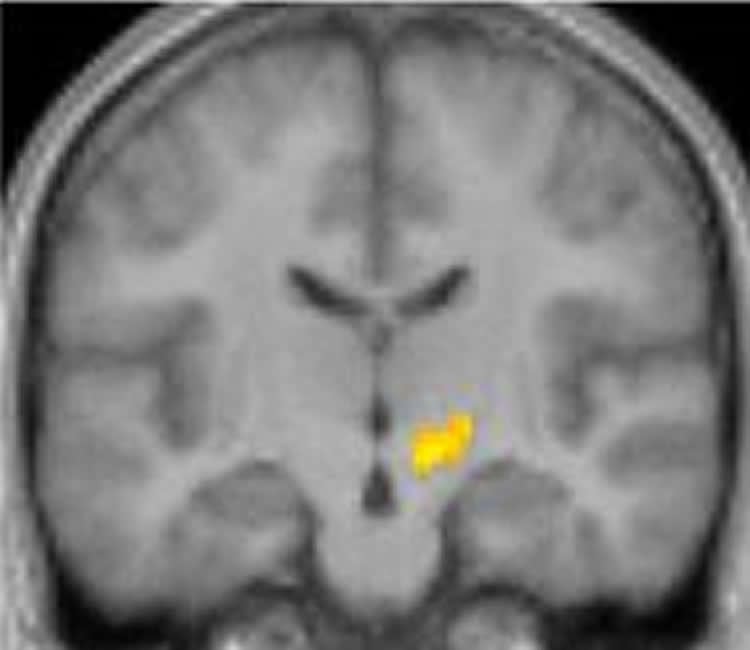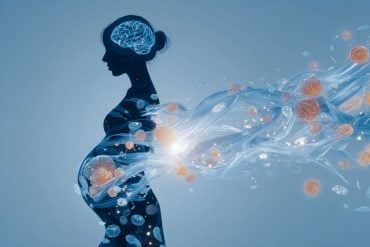Summary: Osaka University researchers reveal the brain region that makes us feel uneasy over unnatural android movements.
Source: Osaka University.
It has been decades in the making, but humanoid technology has certainly made significant advancements toward creation of androids – robots with human-like features and capabilities. While androids hold great promise for tangible benefits to the world, they may induce a mysterious and uneasy feeling in human observers. This phenomenon, called the “uncanny valley,” increases when the android’s appearance is almost humanlike but its movement is not fully natural or comparable to human movement. This has been a focus of study for many years; however, the neural mechanism underlying the detection of unnatural movements remains unclear.
The challenge prompted a team of Osaka University-centered researchers to delve deeper into the topic.
First, they recorded movies of Geminoid F, an android developed by Osaka University and Advanced Telecommunications Research Institute International, and its actual human model. This allowed the researchers to investigate what differences a slight degree of motion unnaturalness would make to feelings about the android.
Second, they used functional magnetic resonance imaging (MRI) to investigate what brain region activates when participants observed the android’s and the human’s movements in the movies, wherein they were only slightly different in naturalness. The subthalamic nucleus is found to be responsible for detecting the android’s slight awkwardness.
“Visual observation of the android, compared with that of the human model, caused greater activation in the subthalamic nucleus (STN), which plays an important role in motor control,” says Takashi Ikeda, lead author of the study, which was published recently in Scientific Reports.
Notably, the STN is involved in the process of impairing dopaminergic neurons in the deep brain structure in Parkinson’s disease patients. Deep brain stimulation to the STN dramatically improves rigidity or impairment of voluntary movement in these patients.

“Our data attest to commonalities between the movements of the android and Parkinson’s disease patients. The android’s movements were rigid and akinesic in a comparable way to the movements of a patient with mild Parkinson’s disease,” corresponding author Masayuki Hirata explains.
The current findings not only serve as valuable information for the design of androids, which could reduce the uncanny feeling in human observers, but also for elucidating the pathology of Parkinson’s disease.
Funding: ImPACT Program of Council for Science, Technology and Innovation (Cabinet Office, Government of Japan) funded this research.
Source: Saori Obayashi – Osaka University
Publisher: Organized by NeuroscienceNews.com.
Image Source: NeuroscienceNews.com image is credited to Osaka University.
Original Research: Full open access research for “Subthalamic nucleus detects unnatural android movement” by Takashi Ikeda, Masayuki Hirata, Masashi Kasaki, Maryam Alimardani, Kojiro Matsushita, Tomoyuki Yamamoto, Shuichi Nishio & Hiroshi Ishiguro in Scientific Reports. Published online December 19 2017 doi:10.1038/s41598-017-17849-2
[cbtabs][cbtab title=”MLA”]Osaka University “Uneasiness in Observers of Unnatural Android Movements Explained.” NeuroscienceNews. NeuroscienceNews, 9 January 2018.
<https://neurosciencenews.com/android-movement-uneasiness-8289/>.[/cbtab][cbtab title=”APA”]Osaka University (2018, January 9). Uneasiness in Observers of Unnatural Android Movements Explained. NeuroscienceNews. Retrieved January 9, 2018 from https://neurosciencenews.com/android-movement-uneasiness-8289/[/cbtab][cbtab title=”Chicago”]Osaka University “Uneasiness in Observers of Unnatural Android Movements Explained.” https://neurosciencenews.com/android-movement-uneasiness-8289/ (accessed January 9, 2018).[/cbtab][/cbtabs]
Abstract
Subthalamic nucleus detects unnatural android movement
An android, i.e., a realistic humanoid robot with human-like capabilities, may induce an uncanny feeling in human observers. The uncanny feeling about an android has two main causes: its appearance and movement. The uncanny feeling about an android increases when its appearance is almost human-like but its movement is not fully natural or comparable to human movement. Even if an android has human-like flexible joints, its slightly jerky movements cause a human observer to detect subtle unnaturalness in them. However, the neural mechanism underlying the detection of unnatural movements remains unclear. We conducted an fMRI experiment to compare the observation of an android and the observation of a human on which the android is modelled, and we found differences in the activation pattern of the brain regions that are responsible for the production of smooth and natural movement. More specifically, we found that the visual observation of the android, compared with that of the human model, caused greater activation in the subthalamic nucleus (STN). When the android’s slightly jerky movements are visually observed, the STN detects their subtle unnaturalness. This finding suggests that the detection of unnatural movements is attributed to an error signal resulting from a mismatch between a visual input and an internal model for smooth movement.
“Subthalamic nucleus detects unnatural android movement” by Takashi Ikeda, Masayuki Hirata, Masashi Kasaki, Maryam Alimardani, Kojiro Matsushita, Tomoyuki Yamamoto, Shuichi Nishio & Hiroshi Ishiguro in Scientific Reports. Published online December 19 2017 doi:10.1038/s41598-017-17849-2






